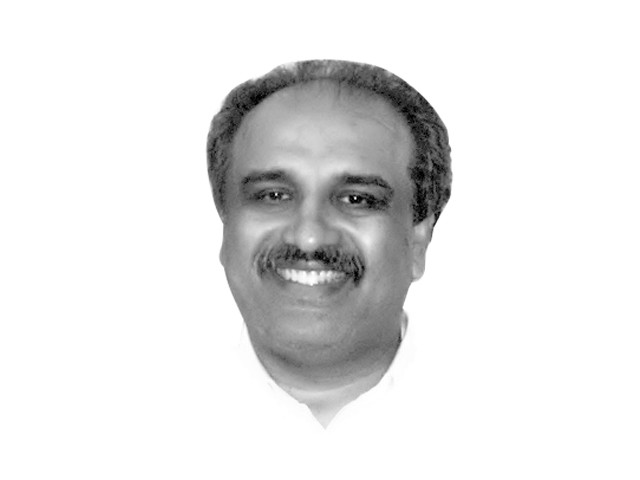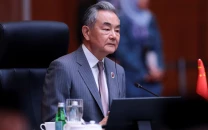Populism and its discontents
Populism revolves around charismatic figure and has historically given rise to authoritarian undemocratic structures

Populism and its discontents
This process is perhaps analogous to how in the late 1960s, many joined the PPP under Zulfikar Ali Bhutto’s leadership. Then too, starting with a group of young members, mostly middle class professionals and with the support from left-wing student groups, Bhutto eventually attracted the Pirs, Makhdooms, Chaudhrys and Khans. The democratic vision and populism of his early years, however, faded quickly and despite Bhutto’s PPP coming into power through the overwhelming support of the students and radical left groups, there was a subsequent authoritarian turn in his politics. Bhutto’s government, despite its populist rhetoric and genuine attempts to institute reform in Pakistan’s cultural, economic and political life, ended up harassing and persecuting political opposition within and outside the party, from the left or from the right of the political spectrum.
No one can predict what future trajectory the PTI’s populism will take. Yet, I seek to raise a cautionary note about the contours of populist politics. Populism revolves around a charismatic figure and has historically given rise to authoritarian and undemocratic governance structures (lest we forget Peron and others). In their desire to succeed, populists tend be less ideologically focused and pragmatically accept a range of political actors in their parties, many from the established elite circles. If this happens, as the trends shows, it may come to haunt the PTI as it unmoored the PPP from its earlier more inclusive and democratic history.
A crucial difference between the PTI and that earlier incarnation of PPP, is programmatic vision. It may be too early to demand a detailed plan from the PTI, similar to the one symbolised by PPP’s late 1960s slogan of roti, kapra aur makan. But Imran Khan’s recent speech gave hints of some of the ways the cricketing legend thinks about addressing problems. If we analyse his words carefully, he basically runs on a resume of efficiency and order, whether speaking about his cricket captaincy or recalling his efforts to build the Shaukat Khanum Hospital. It is also an approach that intertwines modernist rationality with calls for transparency and technological innovation (“everything will be computerised, computers cannot be corrupt!”). Despite the anti-American rhetoric of the PTI leadership, these are approaches clearly gleaned from texts taught at elite US business and management schools. This technocratic fix (efficient systems, orderly management, maximising profit, curbing waste) is part of the lingua franca of contemporary global capital and ‘best business practices’ from which the PTI chief borrows heavily and dresses it in a language of cultural nationalism.
During the speech, it was heartening to hear how at the age of 18 when Imran Khan went to the United Kingdom he was impressed by their welfare system and he would like to emulate a similar system in Pakistan. However, the subsequent examples about economic growth hinted at other underlying influences. A people who have been suffering under economic duress may be susceptible to accepting superficial examples of countries that have witnessed growth and financial stability in recent years. But it is for the leadership, if it is indeed sincere, to be more careful in choosing its analogies. In his speech Imran Khan praised Malaysia, Turkey and Singapore for their economic “miracles”. These pronouncements, of course, do not portray the entire picture, while they sustain the myth of gauging a country’s progress and distribution of wealth through per capita income figures. Irrespective, Mahathir Mohamad of Malaysia and Lee Kuan Yew of Singapore may have enabled their respective countries to become “economic power houses”, but their records have been one of authoritarian rulers with strong undemocratic tendencies. Recep Tayyip Erdogan’s appeal to an emerging Turkish moneyed class, notwithstanding, the jury is still out on his party’s handling of the Kurdish question and the curtailing of civil and political rights.
Following this, the PTI chief’s raising the question of Balochistan showed his sensitivity toward the people of that province. However, the historical analogy to the reunification of West and East Germany as a solution for Balochistan exposed the superficiality of this analysis as well (small towns in Eastern Germany are hampered by economic instability, high youth unemployment and a growing influence of neo-Nazis). It also relied on the use of a technocratic logic to address a deeply complex problem of national self-determination and cultural rights. The paternalistic gesture of apology given to a wronged “younger brother” may be a part of a specific masculine idiom, yet increased “development” cannot by itself resolve the underlying cause of armed conflict in Balochistan. Although it may not have been be intended, such arguments culturally frame the current insurgency as a manifestation of “tribal backwardness” that can be overcome through the fruits of modernist progress.
Perhaps, such pronouncements by the PTI chief can be excused as mere performance in front of large crowds. But it may also point toward an underlying thought process that in its populist rendering encapsulates an elite agenda, which knows how to fix problems through the application of correct technocratic solutions; a somewhat simplistic top-down approach, ironically reminiscent of General Musharraf’s own proclamation of himself as being the CEO of Pakistan.
As we have witnessed in Pakistan (and elsewhere) before, populism can have authoritarian manifestations. The challenge remains to address the issues that are pertinent to the lives of the people, such as of poverty, health, education and housing. But this should not be at the cost of democratic freedoms or cultural rights. If the PTI, or any other political group, truly wants to deepen democracy in Pakistan then they need to bring these several threads of political practice together… respect for cultural difference, economic justice and civic liberties… only then, a more meaningful democratic future can be imagined.
Published in The Express Tribune, January 14th, 2012.
















COMMENTS
Comments are moderated and generally will be posted if they are on-topic and not abusive.
For more information, please see our Comments FAQ